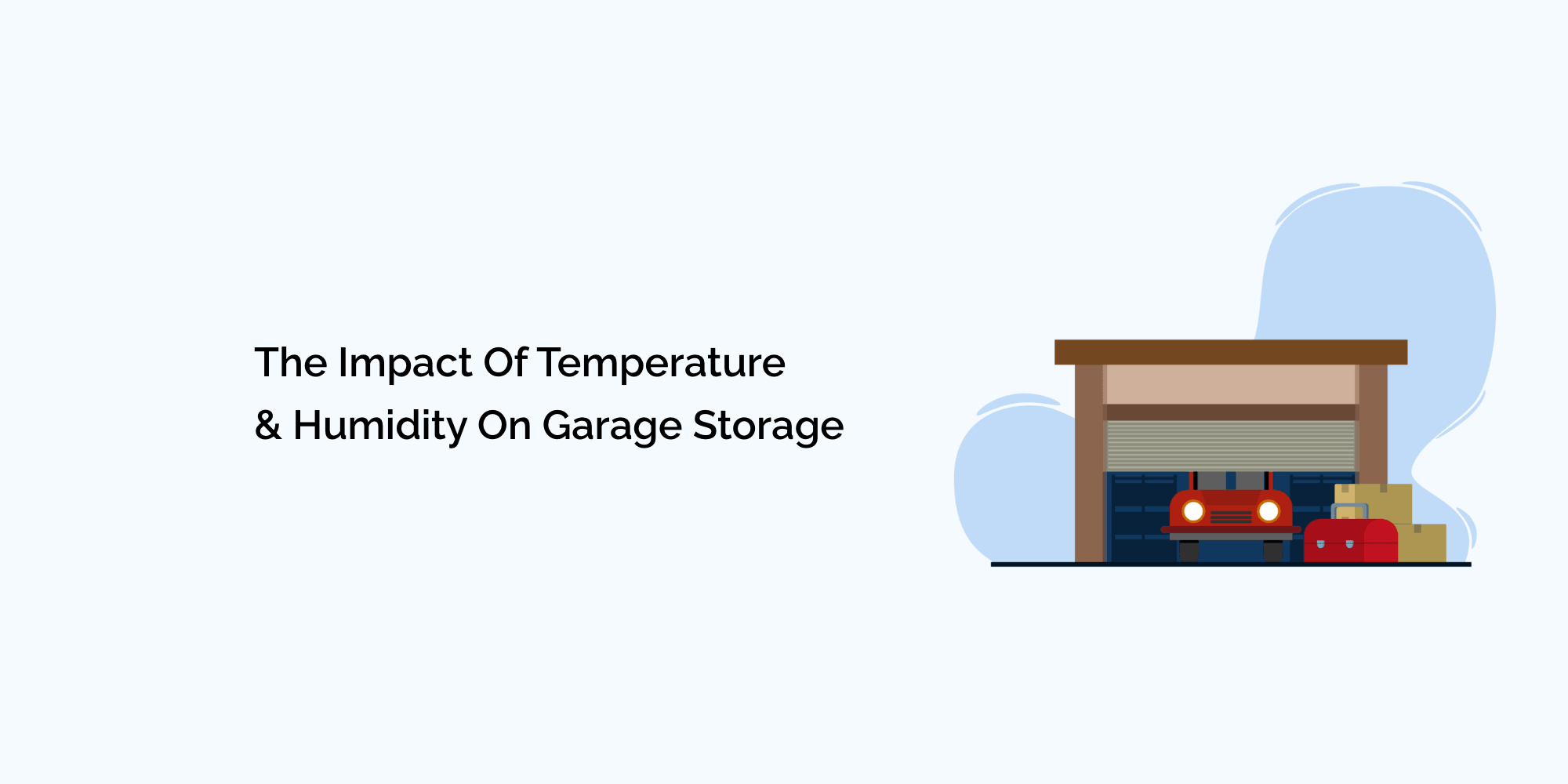When it comes to storing items in your garage, temperature and humidity play crucial roles in maintaining the condition and longevity of your belongings. Many garages are not climate-controlled, making them susceptible to fluctuations in temperature and humidity levels.
In this blog, we will explore the effects of temperature and humidity on garage storage and provide tips to help you protect your items from potential damage.
Understanding Temperature and Humidity
Before delving into the impact of temperature and humidity, it's essential to understand what these factors entail. Temperature refers to the measurement of how hot or cold the air is, while humidity measures the amount of moisture present in the air. These two elements are interrelated, as changes in temperature can affect humidity levels and vice versa.
Effects of High Temperature on Garage Storage
-
Heat-sensitive items: Extreme heat can damage or degrade certain items stored in your garage. Items such as electronics, vinyl records, photographs, and delicate fabrics are particularly vulnerable to heat. High temperatures can cause warping, melting, fading, and deterioration of these items over time.
-
Chemical reactions: Elevated temperatures can trigger chemical reactions in certain substances, leading to potential hazards. For example, flammable materials, such as gasoline, aerosol cans, or paint thinner, may become volatile and pose a fire risk in high-temperature environments.
-
Structural damage: Prolonged exposure to high temperatures can affect the structural integrity of your garage and the items stored within it. Heat can warp wood, weaken adhesives, and cause paint to peel or bubble. This can lead to compromised storage conditions and even safety concerns.
Effects of High Humidity on Garage Storage
-
Mold and mildew growth: Humid environments provide an ideal breeding ground for mold and mildew. These fungi can thrive on various surfaces, including furniture, cardboard boxes, and clothing. Mold growth not only damages your belongings but also poses health risks, such as allergies and respiratory issues.
-
Rust and corrosion: High humidity levels can promote the formation of rust and corrosion on metal items. Tools, bicycles, and automotive parts stored in humid garages are particularly susceptible. Rust compromises the integrity and functionality of these items, reducing their lifespan.
-
Pest infestations: Moisture attracts pests like termites, cockroaches, and rodents. These unwanted visitors can cause significant damage to stored items by chewing through packaging, nesting inside boxes, and contaminating surfaces. Additionally, pests may introduce bacteria and diseases to your garage environment.
Tips to Mitigate Temperature and Humidity Effects
Insulate your garage:
Proper insulation helps regulate temperature and minimize the impact of external weather conditions. Insulated garage doors, walls, and ceilings provide a barrier against heat transfer and reduce the risk of moisture infiltration.
Ventilation:
Adequate airflow is essential for controlling both temperature and humidity. Installing vents or fans can help circulate air and prevent the buildup of moisture and heat. Consider utilizing a dehumidifier or air conditioner to regulate humidity levels.
Seal gaps and cracks:
Prevent outside air and moisture from entering your garage by sealing any gaps or cracks in windows, doors, or walls. Weatherstripping and caulking are effective methods for sealing these areas and creating a more controlled environment.
Proper storage methods:
Utilize shelving units or storage cabinets to keep items off the floor, reducing the risk of moisture damage. Consider using plastic containers with tight-sealing lids to protect belongings from humidity and pests. For temperature-sensitive items, such as electronics, consider storing them indoors
Monitor and control humidity levels:
Use a hygrometer to measure the humidity in your garage. Ideally, humidity levels should be kept between 30% and 50%. If the humidity is too high, consider using a dehumidifier to remove excess moisture from the air. Conversely, if the humidity is too low, a humidifier can help maintain a more balanced environment.
Regular maintenance:
Perform regular inspections of your garage to identify any signs of moisture or temperature-related issues. Check for leaks, condensation, or water damage. Addressing these problems promptly can prevent further damage to your stored items.
Seasonal adjustments:
Recognize that temperature and humidity levels can vary throughout the year. Adjust your storage strategies accordingly. For example, in winter months, when humidity levels tend to be lower, it may be beneficial to introduce some moisture through a humidifier to prevent items from drying out.
Select suitable storage locations:
Consider the specific storage needs of your items. Some items may be better suited for indoor storage, where temperature and humidity levels are more controlled. For valuable or sensitive items, such as artwork or collectibles, it may be worth investing in a climate-controlled storage unit.
Conclusion
Maintaining the appropriate temperature and humidity levels in your garage is crucial for preserving the condition of your stored items. By understanding the effects of high temperature and humidity, and implementing the tips mentioned above, you can significantly minimize the risk of damage to your belongings.
Remember, a well-maintained garage not only protects your stored items but also ensures a safer and more functional space for your everyday activities. Take the necessary steps today to create an optimal storage environment that will serve you well in the long run.








